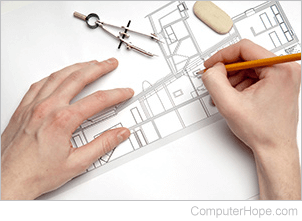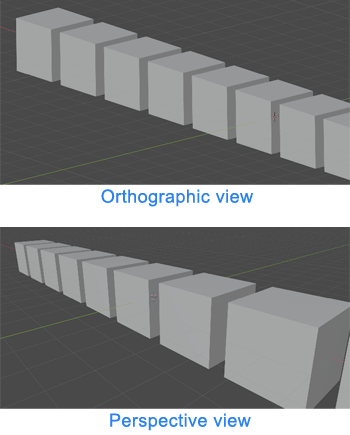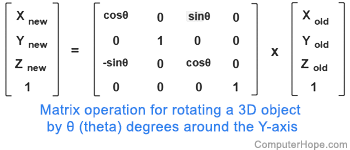Perspective view

Perspective view is a two-dimensional representation of a three-dimensional space, where the apparent size of an object decreases as its distance from the viewer increases.
In illustration
Perspective is an essential technique in illustration because it represents what a person would really see with their eyes when viewing objects and spaces.

When applying the perspective technique, the illustrator must choose the viewpoint angle and properly show height, width, and depth as they would realistically appear. For example, if you were to create an image of a boat, you want to show elements like the bow, stern, port, or starboard sides accurately. Some parts of the boat that are farther away should appear smaller, and some parts should be hidden from view, depending on the chosen viewpoint.
Highly skilled illustrators can create realistic perspectives in their images. By obeying the real-world laws of optics, the illustrator can make the viewer feel like they are really in that place, looking at the depicted object.
Because perspective is essential to creating realistic images, depicting perspective views is important in vocations such as architectural design.
In computer graphics

Perspective helps viewers feel like they're "really there," so rendering perspective views is important in computer graphics. For example, when creating a first-person video game, you want the player to feel truly immersed in the world you created.
In 3D graphics software such as Blender, the perspective view is one way a 3D artist can view and manipulate objects in the scene. It helps the artist see how the final image should appear when rendered with realistic camera lens optics.
The perspective view in 3D graphics software can be used side-by-side compared to other views. For example, in the orthographic view, perspective is ignored, so that parallel lines in the scene also appear parallel in the viewport.
Computing perspective views with matrices

In mathematics, linear algebra defines the major computational principles, including using matrix multiplication to compute perspective in computer graphics software efficiently.
The programmer can efficiently perform transformations such as rotation, scaling, and translation on 3D objects using matrix operations. Matrices can also compute how an object should be rendered in a perspective view.
